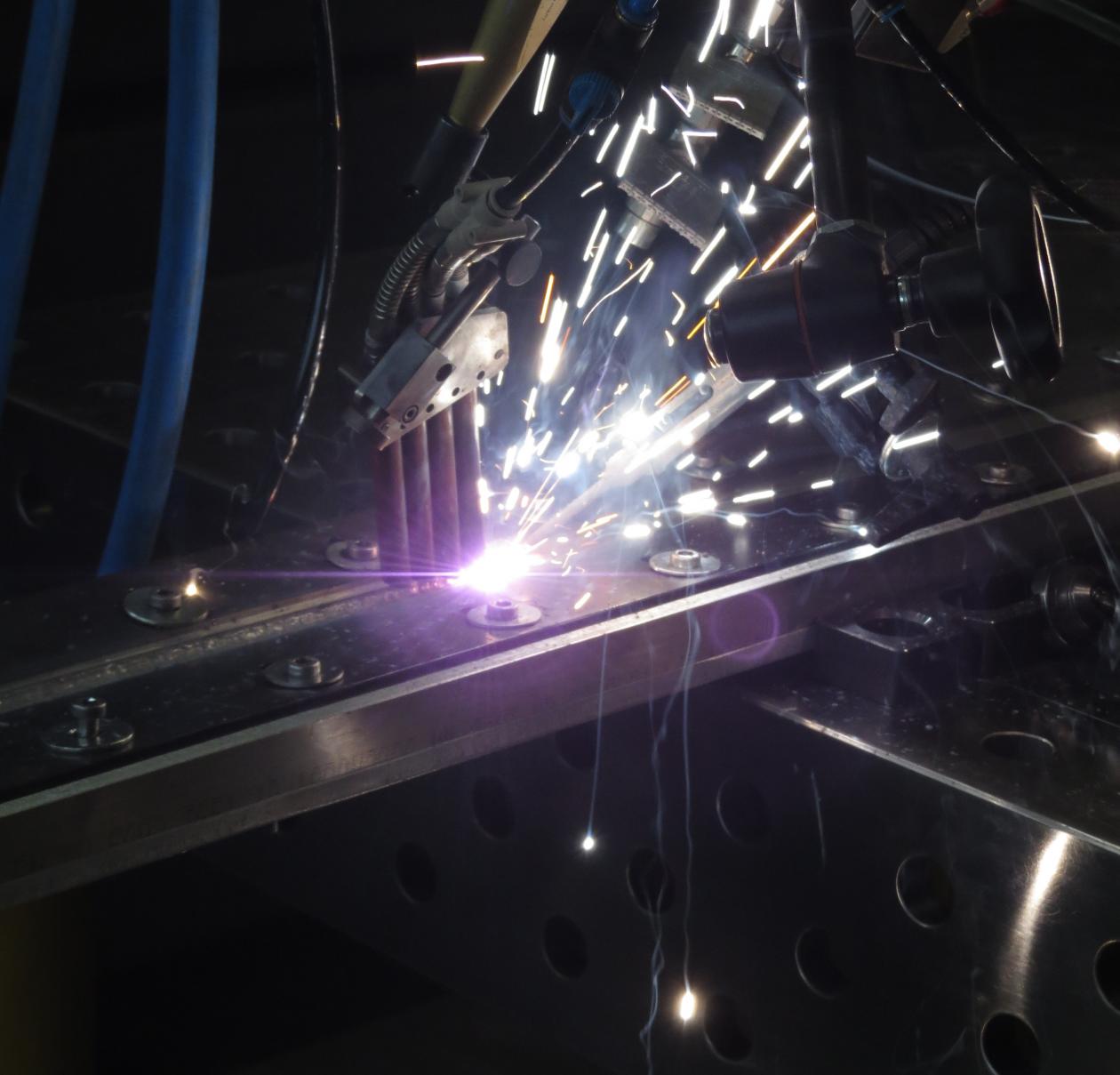Heavyweight in lightweight construction: steel-aluminum laser welding for shipbuilding
Lightweight construction with mixed steel-aluminum compounds is already a major topic in the automotive industry. In order to reduce fuel consumption and carbon dioxide emissions in shipping industry, such mixed compounds are also being used increasingly in shipbuilding. With these, however, completely different material thicknesses come to bear. In the joint research project LaSAAS, the Laser Zentrum Hannover e.V. (LZH) has developed a laser-based joining process for thick mixed joints together with its partners.
Ship’s hulls made of steel and aluminum alloy superstructures are primarily used in yacht construction. Such material combinations reduce the overall weight and lower the center of gravity of the ship, thus stabilizing it. Via an adapter, the two different metals are joined securely and with a high mechanical load capacity. This adapter is conventionally manufactured by explosive plating, a complex and costly joining process. In the joint research project LaSAAS, the LZH and nine partners have developed a laser welding process with integrated welding depth control in order to manufacture such adapters quickly and flexibly.
Thus, new design options for these connection elements can be realized. Under static load in the tensile shear test, the adapter pieces manufactured in this way achieve similar strength values like the explosion-proofed adapters. For example, the yield strength of the welded aluminum alloy is exceeded by 52 percent. Now, in future research activities, it is important not only to achieve a high load capacity, but also a high deformability of the adapter pieces.
Constant seam quality through welding depth control
The welding depth control is supposed to ensure the consistent quality of the welding seam even with sheet thickness jumps. Two approaches were investigated in the project: Both the analysis of the spectral process emission and the short-coherence interferometry can both be reliably used for process control. In the process, the welding depth is actively controlled via the laser beam power.
A controlled process for the laser beam welding of this compound is important in order to minimize the amount of intermetallic phases between the steel and the aluminum alloy. A too large phase leads to embrittlement and increases the tendency to crack. Under stress, a premature failure of the connections may occur. Only with the aid of the welding depth control mixed joints can be welded with relatively high seam quality - especially with varying thicknesses of sheet metal.
About LaSAAS
In addition to the LZH, the Fraunhofer Institute for Structural Durability and System Reliability (LBF), the companies Druckguss Service Deutschland GmbH, Hilbig GmbH, LASER on demand GmbH, Precitec GmbH & Co. KG, Scansonic MI GmbH and TRUMPF Laser- und Systemtechnik GmbH were part of the joint research project, as well as the shipyards Fr. Lürssen Werft GmbH & Co. KG and MEYER WERFT GmbH & Co. KG.
The joint research project "Laser beam welding of steel to aluminum for use in shipbuilding" (LaSAAS) was funded by the Federal Ministry for Economic Affairs and Energy (BMWi) under the technical supervision of Forschungszentrum Jülich GmbH (PtJ).
There are three figures for this press release.

